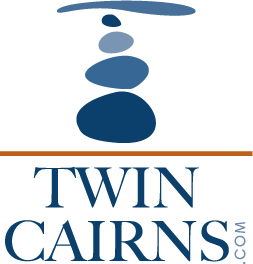CRM Job Report November 2022
Tracking CRM employment demand, wages & required education
Twin Cairns is Evolving
The Twin Cairns research facility – gathering data of jobs & wages for the CRM sector – has been spun off to an independent unit. It is now the Twin Cairns Intelligence Unit. The unit will continue to publish the monthly job report on the Twin Cairns Newsletter and Blog posts. Companies and individuals interested in deeper, more granular data search and analysis, can contact the unit here.
The number of CRM jobs posted online for November declined, reflecting preparation in the sector for the Winter Holiday Season. Yet the number of jobs posted on the Twin Cairns site in Nov 2022 is almost double the average of previous years (Fig 1-2).


Government hiring increased again, especially by federal agencies (Fig 3-4). Within the private sector, companies providing full environmental services led hiring, with 30% of all positions listed. Hiring for companies offering CRM service only continued to decline, these companies offering only 21% of all jobs posted.


Demand for all CRM position types continued to be strong (Fig 5). Demand for Field Techs was robust, and demand for related CRM positions – GIS techs, museum curators, etc – was particularly strong this month. We are not yet separating Architectural History or Museum Work from the “other” category (such separation will begin next year and we build our datasets) but the largest growth in “Other” for November was at both these categories (11 positions for Architecture History and 15 positions in Museums).

The largest number of jobs were offered for positions in the West, Southwest & Southeast (Fig. 6). This likely reflect the onset of winter in northern latitudes, where CRM work becomes more challenging to perform. In the West and Southwest, there was a strong demand for PI/PM while the Southeast and Mid Atlantic experienced strong demand for Field Techs (Fig. 7).


Nationwide, average hourly wages for Field Techs declined in Nov – from $21.40 to $20.77, a 3% decline from October (Fig. 8). Average wages for Crew Chiefs remained almost similar to wages paid in October, while wages for PM/PI grow by 1.2%. The wage gap between Field Techs and everyone else continues to grow (Fig. 9).


Average Field Tech salary increased in the Mid Atlantic, Northwest and Southwest but declined everywhere else (Fig. 10). The lowest Field Tech wages are still being paid in the Northeast.

The number of job posts requiring field school for Field Techs slightly increased to 54% (Fig. 11). The field school requirement is weakest in the Southeast and West (no wage data was published for the two Field Tech jobs offered in the Northeast (Fig. 12).


Employers are publishing wage information for most job posts (Fig. 13). The experience with Twin Cairns indicates that job posts that do not include wage information are generating less views than jobs with wage information.

Summary
The November data indicate that growth at the CRM sector continues at an unprecedented pace. But signs of a gathering storm are emerging. Field Tech wages remain stagnant, loosing purchasing power as they do not keep up with inflation. Failing to recruit quality Field Techs and provide attractive wages will result, down the line, with reduction of qualified Crew Chiefs, PM and PI’s. As the sector expands, where will an adequately trained, experienced and qualified workforce come from?
Is it possible that low Field Tech wages reflect market forces, where supply of Field Techs outstripped demand? We have no hard data to examine this question, but anecdotal evidence suggest that this is not the case. Field Tech positions are posted for longer, some go unfulfilled for weeks, and a reduction in education requirement is evident. Since we started collecting such data, 14% of all Field Tech jobs required Highschool or Associate Degree education only.
It has been suggested that the fragmentation of the CRM sector – over 1,300 companies, none controlling more than 2% of the market – and the use of Cost Reimbursable contracts for many public jobs create inability to increase Field Tech wages. Given the low profit margins for the sector – on average 2-5% – and intensive competition over jobs, companies have limited ability to increase wages. Leaders of some of the largest CRM companies are calling for consolidation through Merger and Acquisition (M&E) to force rate increases – and therefore allow them to increase wages. Others suggest that large Engineering companies are key as they can absorb higher wages for their CRM work with little impact on their overall project bottom line. Indeed, we are seeing increase in wages offered by the large engineering companies. Alas, only a portion of CRM work is part of engineering projects and the higher wages such companies pay will have no impact on non-engineering projects.
The Twin Cairns Intelligence Unit will continue to track wage data and provide a more granular analysis as the size of our databases increase. An informed sector can make better decisions about its future.
Serving the CRM sector with job posts and actionable data.


